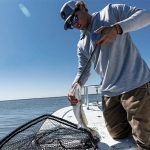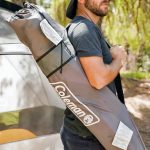Black Diamond Inc. sent investors another curve ball October 8 when it hinted it may use proceeds from the sale of its POC brand to get back in the acquisition game.
The Salt Lake City company announced Thursday it sold POC for $65 million, or 1.9 times annual revenue, to a Dubai investment firm and will now focus on building its Black Diamond and PIEPS brands – as well as investing in new businesses.
BDE expects to realize net proceeds of approximately $60 million after purchase price adjustments, fees, expenses and taxes, or about 1.4 times what it paid for the Swedish maker of high-end skiing and cycling gear in 2012. That will leave BDE with approximately $100.0 million in cash, $22.6 million in debt and around $167.0 million in net operating loss carryforwards acquired through a reverse merger with a public shell company in 2010.
BDE acquired POC in July 2012 for approximately $44.9 million, or nearly 2.0 times its revenues for the fiscal year ended April 30 of that year.
BDE said the deal completes a strategic review process it initiated in March, when it surprised many by announcing it had hired an investment bank to shop all three of its brands to take advantage of high multiples for active lifestyle brands and its $167 million in remaining net operating loss (NOL) carryforwards, which can be used to offset capital gains. The sale adds to a stream of cash now flowing to head protection brands triggered by rising concern over the long-term effects of concussions triggered by litigation between the NFL and retired players who claim the league did not do enough to protect them from brain injury.
Another pivot?
BDE said it now “plans to maximize shareholder value by focusing its attention on the profitability of its remaining Black Diamond Equipment and PIEPS brands, while redeploying the proceeds of the sale to potentially unrelated and diversifying investments.” The company said it will provide a full strategic and financial update on its third quarter earnings call in early November, when there are likely to be many questions.
While the sale put to rest rumors that BDE was having difficulty finding a buyer for POC, the signal that BDE is considering acquisitions raises questions about its strategic vision, which has wavered since investor Warren Kanders bought control of the company and merged it and Gregory Mountain Products in 2010 to create a publicly traded company with more than $230 million in net operating loss carryforwards.
In a presentation to investors that year, BDE CEO Peter Metcalf mapped out a plan to quintuple the combined company’s sales to $500 million by 2015 through organic sales and acquisitions. BDE went on to acquire POC and PIEPS, an Austrian maker of personal locator beacons and other avalanche gear in 2012. Early in 2013, Metcalf said BDE would shift its focus from acquisitions to organic growth to take advantage of big growth opportunities at Black Diamond and POC.
Later that year, he announced a “strategic pivot” that called for BDE to focus its resources on accelerating the launch of Black Diamond’s first apparel line and beefing up direct-to-consumer (DTC) efforts.
In February 2014, BDE disclosed it had hired Rothschild Group to evaluate strategic options for the Gregory brands, which was growing much faster in Asia than North America. Three months later, Metcalf outlined plans to trim the SKU count at the Black Diamond brand’s legacy equipment business and shift resources to the higher margin and faster growing apparel and DTC businesses. In June, 2014, BDE reached an agreement to sell Gregory to Hong Kong-based Samsonite International S.A. for $85 million.
In February of this year, Metcalf disclosed that BDE was shuttering its manufacturing and distribution center opened just two years earlier in China and would repatriate much of its hardgoods manufacturing to Salt Lake City and outsource ski manufacturing to a European factory. The next month, BDE surprised many when it announced it had hired Rothschild Inc. and Robert W. Baird & Co. to evaluate strategic options for each of the company’s remaining bands: Black Diamond, POC and PIEPS.
“At a time when premium active lifestyle and outdoor brands are selling at historically high levels, and there is a scarcity of authentic branded assets available to strategic acquirers,” Kanders explained at the time, “the board's decision to investigate its strategic alternatives results from its belief that the company is likely to utilize 100 percent of its NOL balances in connection with this process and represents the logical next step in our ongoing efforts to unlock value for Black Diamond shareholders.”
Kanders, who remains BDE's largest shareholder, told The B.O.S.S. Report Friday that the “100 percent” figure assumed BDE would find buyers for both Black Diamond/PIEPS and POC. While BDE made a profit of about $20 million on the POC sale, it won’t incur U.S. income taxes on the transaction until and unless it repatriates those dollars to the United States.
Greater synergies for POC
Investcorp, which specializes in serving wealthy clients in the Arabian Gulf, has a long history of investing in European sporting goods brands. Its first investment in Europe in 1984 was made in Riva Boats. It has since gone on to buy and sell Helly Hansen. In December 2014 it acquired Dainese, an Italian maker of motorcycle helmets that now sells helmets under the Dainese and AGV brands to skiers, snowboards, cyclists and horseback riders.
“There are synergies between the two businesses that will be explored in the future,” Investcorp said in its press release announcing the acquisition.
Established in 2004 and headquartered in Sweden, POC designs, sources, markets and sells helmets, body armor, goggles, eyewear, gloves and other gear in 27 countries worldwide. The company has partnered with fellow Swedish brands Volvo and Ericsson to pioneer new safety concepts in cycling as well as with top athletes to develop products.
American World Cup alpine ski racer and Olympic gold medalist Julia Mancuso has partnered with POC to develop a signature collection. The brand also collaborates with pro cycling teams Team Cannondale-Garmin and Team Stolting to ensure it stays at the front in product development and in the eyes of core cyclists.
In 2014, POC’s sales reached $34.8 million, up roughly 55 percent since its acquisition by BDE, which helped the company launch its first line of road bicycling helmets and cycling apparel.
“We are delighted to be partnering with Investcorp in the next stage of our development,” said POC Founder Stefan Ytterborn. “I am confident that with their support we will continue to grow sales, increase penetration into new markets and drive forward innovation, while not deviating from our ultimate mission of doing the best we can to possibly save lives and reduce consequences of accidents for gravity sports athletes and cyclists.”
As of June 30, 2015, the Investcorp Group had $10.6 billion in total assets under management, including corporate investment in the U.S., Europe and the Gulf, real estate investment in the US and global hedge funds. In 2014, its U.S. holdings included stakes in multiple real estate projects and 13 companies, including Totes>>Isotoner Corporation, which owns the Acorn slippers and Manzella glove brands.















